A Historical Parallel
The thoughts expressed in this article are likely to ellicit emotional reactions on all sides. But let’s try to use reason and logic to understand the underlying points. True, there is a difference between the parallel and the current situation, which will be addressed in Part II with a discussion of the fifth chapter of the Rambam in Hichos Melachim.. Let’s first read Part I, however. Please try not to comment, until you have readboth Part I and Part II. In the interest of brevity, this article has been kept to less than 4900 words.
Part I
Imagine for a moment, we are in America in the early 1760’s. George Washington and the fathers of this country see that things are not going so well, vis avis England. A war will probably happen in the next two decades or so. But there is a group of people that could potentially be a resource of much manpower.
The Native American population was on the continent far before George Washington and crew. Why not forcibly recruit them to do battle with the British?
What? Their leaders disagree? Jail them all. It soulnds somewhat unfair, does it not?
Is there a parallel with the anti-Chareidi sentiment that is now prevalent in Eretz Yisroel?
Let’s take a brief survey of some of the history. But let’s also
Early Medieval Scholars’ Immigration
Rav Shimshon of Shantz (d.1215): He was one of the most prominent Baalei HaTosfos – scholars who wrote commentaries on the Talmud that expanded on Rashi’s earlier work. His immigration with 300 other Tosafists in 1211 was remarkable for several reasons. This move occurred during the time of the Crusader Kingdom of Jerusalem, when travel was extremely dangerous. Leading 300 prominent scholars to make this journey demonstrated incredible commitment and likely helped preserve Torah scholarship in the Holy Land during a turbulent period. His arrival with such a large group of scholars would have significantly boosted the Jewish scholarly presence in the region.
Rav Yechiel of Paris (d.1268): As a leading Rav in Paris, his departure came after participating in the famous Disputation of Paris in 1240, where he defended the Talmud against accusations. His establishment of a yeshiva in Acre (then under Crusader control) was particularly significant as it created an important center of Torah learning in the Holy Land at a time when such institutions were rare there. Acre was a major port city and trading hub, which likely helped his yeshiva attract students and maintain connections with Jewish communities in Europe.
Ramban (Rav Moshe ben Nachman, 1194-1270): The Ramban’s arrival and establishment of a synagogue in Jerusalem in 1267 marked a pivotal moment in Jewish history. He was already renowned as one of the greatest Jewish scholars, known for his biblical and Talmudic commentaries, philosophical works, and medical expertise. His synagogue became a symbol of Jewish continuity in Jerusalem and helped reestablish the Jewish presence in the city. The fact that this synagogue still exists today (though rebuilt several times) demonstrates its enduring significance as a symbol of Jewish resilience and continuity.
Historical Impact: These three migrations established a pattern of religious scholars returning to the Holy Land that would continue for centuries. They helped maintain Jewish scholarly life in Israel during a difficult period and created institutions that would serve as models for future Jewish settlement. Their actions also reinforced the religious and cultural connection between diaspora Jews and the Land of Israel.
These moves were particularly significant because they occurred during the Crusader period, when travel to and settlement in the Holy Land was extremely dangerous. Their willingness to face these risks demonstrated the profound religious and cultural significance of living in the Holy Land.
Chasidic Aliyah
The late 18th century marked a transformative period in Jewish history. The Chasidic movement, founded by the Baal Shem Tov (1698-1760), was rapidly spreading throughout Eastern Europe, bringing new vitality and spiritual enthusiasm to Jewish life. This period also saw significant political changes with the partitions of Poland, increasing Russian control over Jewish communities, and the early stirrings of the Enlightenment movement.
Rav Menachem Mendel of Vitebsk (1730-1788) was one of the most influential early Chasidic leaders, whose decision to lead a mass aliyah proved groundbreaking. Born in Vitebsk in modern-day Belarus, he became a disciple of the Maggid in his youth and became known for his profound mystical insights and leadership abilities. He authored several important Chasidic works, including “Pri Ha’aretz” and “Likkutei Amarim.”
Understanding Rav Menachem Mendel’s aliyah requires understanding his teacher, the Maggid of Mezheritch (1704-1772). The Maggid was the primary disciple and successor of the Baal Shem Tov, and he transformed Chasidism from a popular movement into a structured system. He emphasized the importance of spiritual leadership and the role of the tzaddik, and his teachings greatly influenced Rav Menachem Mendel’s approach to Jewish life and the importance of the Land of Israel.
The 1777 aliyah journey itself was remarkable. The organization of 300 Chasidim and their families likely totaled over 1000 people, presenting enormous logistical challenges for such a large group traveling together. The journey required complex financial arrangements to support the community, faced the dangerous nature of travel at that time, and necessitated navigating the political complications of obtaining necessary permissions.
Upon arrival in the Holy Land, the settlement process began with the group initially settling in Safed. They later moved to Tiberias due to various challenges. The community established new Chasidic courts and study halls, created systems for supporting the community economically, and maintained connections with Chasidic communities in Europe through letters and emissaries.
The immediate effects of this migration were profound. The movement established the first organized Chasidic presence in the Holy Land, created new centers of Chasidic learning and practice, developed support systems for future waves of Chasidic immigration, and strengthened connections between the Land of Israel and Eastern European Jewish communities.
The religious impact of this aliyah established precedent for Chasidic leadership making aliyah and created a new synthesis of Chasidic thought with the holiness of the Land. The movement developed unique practices combining Chasidic customs with Holy Land traditions and influenced future waves of Chasidic immigration. Culturally, it strengthened the emotional connection between Chasidim and the Land of Israel, created new patterns of communication between Holy Land and diaspora communities, established new customs and traditions specific to Chasidim in the Holy Land, and influenced the development of charitable support systems for Holy Land communities.
The social impact of this movement created a new model for organized group aliyah and established patterns for maintaining religious communities in the Holy Land. The community developed systems for integrating new immigrants and influenced future settlement patterns. Historically, this represented the first large-scale Chasidic immigration to the Holy Land, created the foundation for future Chasidic communities in Israel, influenced the development of pre-modern Jewish settlement in the Land of Israel, and established important precedents for later religious aliyah movements.
The impact of this aliyah continues to resonate today. Many current Chasidic communities in Israel trace their roots to this movement, and the letters and teachings from this period continue to be studied. The model of organized religious immigration they established influenced later movements, and the connections they established between Holy Land and diaspora communities continue to shape Jewish life.
This aliyah movement marked a crucial turning point in Jewish history, establishing patterns and connections that would influence Jewish life for generations to come. It demonstrated the possibility of maintaining traditional Jewish life in the Holy Land while building new institutions and communities. The success of this movement, despite numerous challenges, helped pave the way for future waves of religious immigration to the Land of Israel and contributed to the ongoing Jewish presence there.
The Talmidei haG’ra Aliyah
The early 19th century witnessed a significant migration movement that would profoundly impact the Jewish presence in Jerusalem. This movement began in 1807 when the disciples of the Vilna Gaon (known as talmidei haG’ra) embarked on a historic journey to settle in the Holy Land.
The first wave of this movement was led by Rav Menachem Mendel of Shklov, a distinguished scholar and devoted student of the Vilna Gaon. Rav Menachem Mendel’s decision to lead this group to Jerusalem was deeply influenced by the teachings of the Vilna Gaon, who had emphasized the supreme importance of settling in the Land of Israel. The Vilna Gaon himself had attempted to make this journey but was unsuccessful, making his disciples’ successful settlement even more meaningful.
This initial group faced numerous challenges upon their arrival in Jerusalem. The city at that time was under Ottoman rule and living conditions were extremely difficult. The Jewish community was small and impoverished, yet Rav Menachem Mendel and his followers persevered in establishing themselves and creating new institutions of Torah learning.
Shortly after the first group’s arrival, a second wave of the Vilna Gaon’s disciples arrived under the leadership of Rav Yisroel ben Shmuel of Shklov, who would become one of the most influential figures in the Jerusalem Jewish community until his passing in 1839. Rav Yisroel brought with him not only the scholarly traditions of the Vilna Gaon but also new approaches to community organization and development.
The impact of these two waves of immigration was transformative for Jerusalem’s Jewish community. These scholars brought with them the Lithuanian tradition of intense Torah study and analytical thinking, which would significantly influence the character of Jerusalem’s religious life. They established new yeshivas and study halls that would become models for future institutions.
Rav Yisroel ben Shmuel of Shklov’s contribution was particularly significant. He authored several important works, including “Pe’at HaShulchan,” a comprehensive guide to the agricultural laws applicable in the Land of Israel. This work demonstrated the practical application of Torah law to life in the Holy Land and became an essential reference for future generations.
The talmidei haG’ra movement also established new systems for supporting Torah scholars in Jerusalem. They developed networks of communication and support with Jewish communities in Eastern Europe, creating patterns of charitable giving that would sustain Jerusalem’s Torah institutions for generations to come.
These scholars also played a crucial role in reviving ancient customs and practices specific to the Land of Israel. They meticulously studied and documented the agricultural and ritual laws unique to the Holy Land, helping to bridge the gap between theoretical knowledge and practical application after centuries of exile.
The legacy of this movement extends far beyond its immediate impact. The educational institutions and scholarly traditions established by these disciples of the Vilna Gaon became the foundation for what would later develop into the Jerusalem Lithuanian yeshiva world. Their emphasis on serious Torah study and strict adherence to Jewish law helped shape the character of Jerusalem’s religious community.
The movement also strengthened the connections between the Jewish communities of Lithuania and Jerusalem, creating lasting bonds that would facilitate future waves of immigration and support. Their success in establishing themselves in Jerusalem, despite the numerous challenges they faced, served as an inspiration and model for later groups of religious immigrants.
The influence of the talmidei haG’ra movement continues to be felt in Jerusalem today, particularly in the approach to Torah study and the organization of religious institutions. The movement’s emphasis on combining deep Torah scholarship with practical implementation of Jewish law in the Land of Israel remains a defining characteristic of Jerusalem’s religious community.
This historical migration represents a crucial link in the chain of Jewish return to the Holy Land, demonstrating how dedicated scholars could overcome significant obstacles to establish new centers of Torah learning and observance. Their success helped pave the way for future waves of religious immigration and contributed significantly to the development of Jerusalem as a center of Torah scholarship.
The Charedi Communities
The early immigrants to the Holy Land succeeded in establishing vibrant ultra-Orthodox communities in both Safed and Jerusalem. These settlements would become centers of Torah learning and religious life that continue to influence Jewish communities today. The Jerusalem community became particularly noteworthy under the name Kollel haPerushim, which represented a new model of religious community organization in the Holy Land.
Rav Zundel of Salant, who lived from 1786 to 1866, emerged as one of the most significant figures in this community. His influence extended far beyond his personal scholarship and piety. Most notably, he served as the spiritual mentor to Rav Yisroel Salanter, who would later establish the Mussar movement, a revolutionary approach to Jewish ethical development and character refinement. Rav Zundel’s teaching methods and personal example profoundly shaped Rav Yisroel Salanter’s understanding of how ethical and moral development should be integrated into traditional Torah study.
Rav Zundel’s impact on Jerusalem’s Jewish community was further extended through his son-in-law, Rav Shmuel Salant, who lived from 1816 to 1909. Rav Shmuel Salant would become one of the most beloved and influential rabbis in Jerusalem’s history. His tenure as the chief Rav of Jerusalem, spanning over three decades from 1878 to 1909, was marked by remarkable developments in the city’s Jewish community.
During his leadership, Rav Shmuel Salant demonstrated exceptional administrative abilities alongside his Torah scholarship. He worked tirelessly to unite Jerusalem’s diverse Jewish communities and establish new institutions to serve their needs. His approach to leadership was characterized by wisdom, compassion, and an ability to bridge differences between various segments of the community.
The influence of Kollel haPerushim under these leaders extended far beyond Jerusalem. They established new standards for religious scholarship and community organization that would be emulated by other Jewish communities throughout the Land of Israel. Their success in creating sustainable religious institutions helped establish Jerusalem as a premier center of Torah learning.
Rav Shmuel Salant’s leadership style was particularly noteworthy. He was known for his ability to maintain peace between different factions within the Jerusalem community while upholding high standards of religious observance and scholarship. His decisions on matters of Jewish law were respected throughout the Jewish world, and his influence helped establish Jerusalem as a central authority in matters of Jewish law and custom.
The legacy of these early communities and their leaders continues to influence Jewish life in Jerusalem today. The institutions they established, the scholarly traditions they maintained, and the models of leadership they demonstrated helped shape the character of Jerusalem’s religious community. Their success in building sustainable religious institutions while maintaining high standards of Torah scholarship and ethical behavior set important precedents for future generations.
The development of these communities also demonstrates how the early waves of religious immigration to the Holy Land succeeded in establishing lasting institutions that would serve as foundations for future growth. The combination of scholarly excellence and practical leadership exhibited by figures like Rav Zundel of Salant and Rav Shmuel Salant created a model of religious leadership that balanced traditional learning with the practical needs of community development.
Their influence extended beyond their immediate community to impact the broader Jewish world. The connection between Rav Zundel and the Mussar movement, through his student Rav Yisroel Salanter, shows how the Jerusalem community maintained vital connections with developments in Jewish thought and practice throughout the Jewish world. This helped establish Jerusalem not only as a center of traditional learning but also as a source of new developments in Jewish religious life.
These early communities thus played a crucial role in establishing Jerusalem as a center of Torah scholarship and religious life, setting patterns of community organization and religious leadership that would influence Jewish communities for generations to come. Their success in building lasting institutions while maintaining high standards of religious observance and scholarship demonstrates the profound impact that dedicated leadership can have on the development of religious communities.
Pre-Dates Them All
The religious Jewish return to the Land of Israel through the Chasidic and Lithuanian movements represents a remarkable historical phenomenon that significantly predated modern political Zionism. These early Aliyah movements, beginning in the early nineteenth century, established thriving Jewish communities in the Holy Land long before any secular or nationalist movements emerged.
The Chasidic immigration led by Rav Menachem Mendel of Vitebsk in 1777, and the movement of the Vilna Gaon’s disciples beginning in 1807, were groundbreaking organized efforts to resettle the Holy Land. These groups were motivated purely by religious devotion and the ancient Jewish connection to the land, rather than by modern nationalist ideologies. Their arrival and successful establishment of communities occurred more than a century before the first Zionist Congress in 1897.
These early immigrants, who formed what became known as the Yishuv haYashan (Old Settlement), created stable, sustainable Jewish communities based on Torah study and traditional Jewish life. Their success in establishing these communities demonstrated that organized Jewish settlement in the Land of Israel was possible, though their motivations and methods were entirely different from those of the later Zionist movement.
The contrast between these early religious settlers and the later Zionist movement is striking. While the first Zionist Aliyah of the 1880s is often portrayed as the beginning of modern Jewish settlement in the Land of Israel, the religious communities of the Yishuv haYashan had already been flourishing for generations by that time. These religious Jews had already established synagogues, study halls, charitable institutions, and functioning communities in cities like Jerusalem, Safed, and Tiberias long before the arrival of the first Zionist pioneers.
It’s particularly significant that these religious communities managed to establish themselves during the Ottoman period, under much more difficult conditions than those faced by later immigrants. They created systems for supporting Torah scholars, maintained connections with Jewish communities abroad, and developed the infrastructure necessary for traditional Jewish life without any of the organizational or financial support that would later be available to Zionist settlers.
The success of these early religious settlements serves as a historical testament to the continuous Jewish presence in and connection to the Land of Israel. While the Zionist movement would later promote the idea of “making the desert bloom,” these religious communities had already demonstrated the possibility of rebuilding Jewish life in the Holy Land through their faith and determination.
The religious nature of these early communities shaped their character in fundamental ways. Unlike the later Zionist settlements, which often focused on agricultural development and political autonomy, these religious communities centered their lives around Torah study, prayer, and the fulfillment of religious commandments specific to the Land of Israel. Their presence maintained an unbroken chain of traditional Jewish life in the Holy Land that connected directly back to ancient times.
The term “Yishuv haYashan” itself reflects the historical priority of these communities. By the time the Zionist movement began, these religious communities were already considered “old” in contrast to the “new” Zionist settlements. This terminology underscores the fact that organized Jewish settlement in the Land of Israel did not begin with Zionism but rather with these religious pioneers who arrived generations earlier.
These early religious settlers faced enormous challenges, including poverty, disease, and political instability. Yet they persevered and built lasting institutions, many of which continue to exist today. Their achievement in establishing and maintaining these communities for over a century before the arrival of political Zionism demonstrates the depth and strength of the traditional religious connection to the Land of Israel.
The historical record clearly shows that the organized return to the Land of Israel began not with political Zionism but with these religious movements of the late eighteenth and early nineteenth centuries. Their success in establishing sustainable communities, driven solely by religious devotion, set important precedents for future Jewish settlement in the land, though their religious character and goals were fundamentally different from those of the later Zionist movement. This chronological priority of religious settlement over political Zionism remains an important historical fact that helps us understand the complex nature of modern Jewish presence in the Land of Israel.
By the dawn of the twentieth century, the Yishuv haYashan (Old Settlement) of the ultra-Orthodox Jewish community had developed into a well-structured and deeply rooted society. This community had spent generations building and refining their institutions, creating a complete religious infrastructure that supported every aspect of traditional Jewish life.
The kehillah (community) structure they established was sophisticated and multifaceted, with organized systems for providing religious services, charity, and social support. These communities were led by renowned Torah scholars who served not only as spiritual leaders but also as guides in all aspects of communal life. These great rabbis, through their scholarship and leadership, helped maintain high standards of religious observance and learning while also dealing with the practical challenges facing their communities.
The educational system they created was particularly noteworthy. Their yeshivos (advanced Torah academies) had become centers of intense Torah study, attracting scholars from throughout the Jewish world. The chadarim (elementary schools) and Talmud Torahs (religious schools) provided comprehensive religious education for children at all levels. These institutions were dedicated to transmitting traditional Jewish knowledge and values without any deviation from traditional methods or content, ensuring the preservation and continuation of authentic Torah education.
This educational framework was remarkable for its comprehensiveness. From early childhood through advanced study, students received thorough training in Jewish texts, laws, and customs. The curriculum remained focused purely on religious studies, maintaining the traditional approach to Jewish education that had been developed over centuries in European Jewish communities.
The success of these educational institutions was evident in the growing number of children they served and in the high level of Jewish scholarship they produced. The students who emerged from these schools were thoroughly versed in Jewish texts and traditions, prepared to carry forward the community’s religious way of life. This educational system played a crucial role in ensuring the continuation of traditional Jewish life in the Holy Land, creating new generations of scholars and community leaders who would maintain and strengthen these institutions.
The religious community’s achievement in establishing such a complete and self-sustaining system of Jewish life and education, well before the arrival of modern Zionist settlements, demonstrated their success in recreating traditional Jewish community structures in the Holy Land. Their focus on maintaining undiluted Torah education and traditional Jewish life created a strong foundation that would enable their community to maintain its distinct character even as new waves of Jewish immigration brought different approaches to Jewish life in the Land of Israel.
This well-established community, with its developed institutions and strong leadership, would prove crucial in preserving traditional Jewish life in the Holy Land through the many changes and challenges that the twentieth century would bring. The strength of their institutions and the clarity of their educational approach helped ensure the survival and growth of traditional Jewish life in the Holy Land, maintaining an unbroken chain of Torah tradition in the land of their ancestors.
Historical Context of Current Tensions
This historical reality makes the current anti-Charedi sentiment not just politically problematic but historically ironic. These communities were maintaining Jewish continuity in the land of Israel through periods of extreme hardship, preserving Torah learning and Jewish tradition when such dedication required tremendous sacrifice. To now treat them as if they are somehow less legitimate or less committed to the welfare of the Jewish people in Israel represents a tragic misreading of history and a fundamental injustice to those who maintained Jewish presence in the Holy Land long before the modern state came into being.
The parallel with Native Americans helps illuminate the deep ethical problems with attempting to forcibly reshape communities that predate the current political structure. Just as we now recognize the profound injustice of historical attempts to forcibly assimilate Native American communities, we should be equally troubled by attempts to coerce change in Charedi communities that have maintained their traditional way of life in the Holy Land for generations before the modern state existed.
PART II
The deep and painful divide between Israel’s Chareidi communities and its other communities both secular and national religious – stands as a festering wound in the nation’s social fabric, one whose consequences have become increasingly apparent with each passing crisis.
This division, far from being a mere theological disagreement, has profound implications for Israel’s national security and social cohesion.
In Part I we discussed the moral issues involved in forcibly drafting a community that pre-dated a newer community. But there is a crucial difference when there is an existential imperative.
The Rambam (Hilchos Melachim 5:1) thus writes that one of the three categories of milchemes mitzvah (in addition to waging war against Amalek, and war against the Seven Nations of the Land of Israel) is saving members of Klal Yisroel from their enemies. This is in any Yishuv – and it certainly applies in Eretz Yisroel
In the post October 7th world, there is a clear halachic imperative that calls upon every Jew to defend their brethren from murderous attacks. This sacred duty has manifested itself three times previously:
- In the desperate battles of 1948
- during the existential crisis of 1967
- throughout the harrowing days of 1973,
And, of course, most recently in the aftermath of the catastrophic security failures surrounding the October 7th atrocities.
There is a problem, however. How can untrained people all of a sudden come to their brethren’s aid and fulfill the Rambam in Hilchos Malachim?
The Chareidi Dati Le’umi world and the Dati Le’umi world have opted to join up with the IDF in either a frum Battalion or in the regular forces. The Chareidi world and their leaders have not, and that is perhaps because of the historical record.
And the historical record speaks volumes: secular Zionists and IDF leadership have demonstrated, time and time again, a deeply troubling pattern of marginalizing and dismissing their observant brothers and sisters.
The manifestation of this deeply entrenched antipathy permeates every aspect of military service. For decades, an impenetrable glass ceiling loomed over most observant Jewish soldiers, crushing their aspirations for advancement within the IDF. Even now, with just two observant generals serving, this ceiling has merely cracked rather than shattered completely. The supposedly accommodating policy regarding prayer time has become a source of bitter resentment, as the IDF’s poorly conceived implementation forces secular soldiers to shoulder additional burdens while their observant comrades pray, creating unnecessary tension and division.
The treatment of Shabbos observance represents perhaps the most egregious assault on religious dignity. For observant Jews, the Sabbath carries the same weight and significance as a national flag does for any patriotic people. Yet week after week, IDF procedures and protocols force observant Jews to metaphorically trample their own flag through expected Shabbos violations. While the principle of Pikuach Nefesh (preservation of life) rightfully supersedes Sabbath observance, the arrogance of secular IDF staff in appointing themselves arbiters of these deeply religious matters – matters for which they show utter contempt – is nothing short of shocking.
The state of Kashrus in IDF facilities stands as a testament to institutional indifference. The rampant mixing of milk and meat, the barely existent adherence to Kashrut standards, and widespread certification fraud effectively force observant soldiers to choose between proper nutrition and religious conviction. The IDF’s aggressive push toward gender integration, while perhaps well-intentioned, has become a cudgel with which to bash religious sensibilities. The disgust and derision shown toward those uncomfortable with mixed-gender situations, forced exposure to women’s singing, and numerous other provocations – some seemingly intentional – create an environment of hostility rather than unity.
The requirement for special permission to maintain traditional dress codes subjects observant soldiers to the whims of commanders who often harbor open disdain for religious practices. The pervasive influence of secular Zionism, with its misguided attempt to replace divine connection with nationalist fervor, has created deep spiritual conflicts. Perhaps most destructively, some Israelis actively foment hatred toward the Chareidi population for their non-participation in national defense – a situation ironically created by the very institutions now condemning it.
The tragedy lies in the missed opportunity: the government and IDF could have easily created a separate infrastructure for observant Jews, similar to Mishteret Israel’s independent yet cooperative relationship with the IDF. Historical precedent exists in abundance, from World War Two to numerous multinational operations where armies operated under separate administrations while pursuing common goals. Menachem Begin’s vision for the Altalena could have provided a blueprint for such cooperation. Instead, in one of the darkest chapters of Israeli history, future IDF leadership chose to open fire on their own brothers, spilling Jewish blood in a horrific display of internal division.
So what is the answer?
Today’s fractured reality is the bitter harvest of decades of deliberate marginalization and dismissal of religious concerns. However, hope does remain.
Through the establishment of something akin to a National Guard entity specifically designed for the religious population, with an independent administration mirroring, say, Mishteret Israel’s model, these seemingly insurmountable divisions could begin to heal. This administration should not be a sham, but rather it should be made up of Chareidi individuals who realize that there is a Rambam Hilchos Malachim perek hay obligation.
The independent administration is absolutely key.
Such an organization would enable the Chareidi population to fulfill their halachic obligation to defend their fellow Jews during such a time of existential crises, while maintaining their religious and theological integrity and independence. The current crisis demands nothing less than this bold reimagining of how Chareidi Jews can serve their nation during an existential crisis without compromising their Torah observance.
The author can be reached at [email protected]
The views reflected in this op-ed do not necessarily represent those of YWN. Have an opinion you would like to share? Send it to us for review.

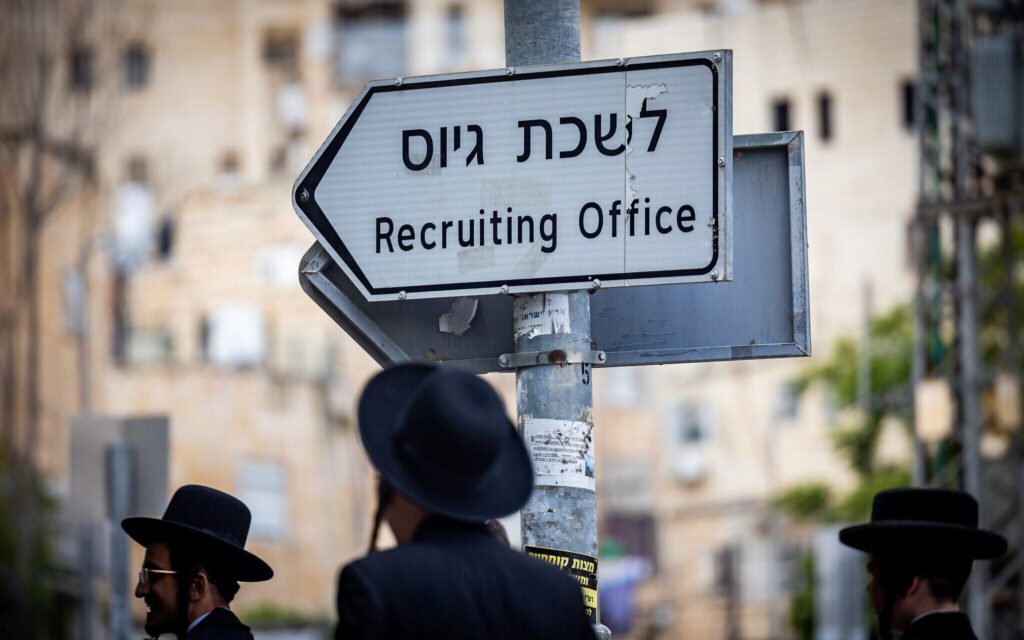
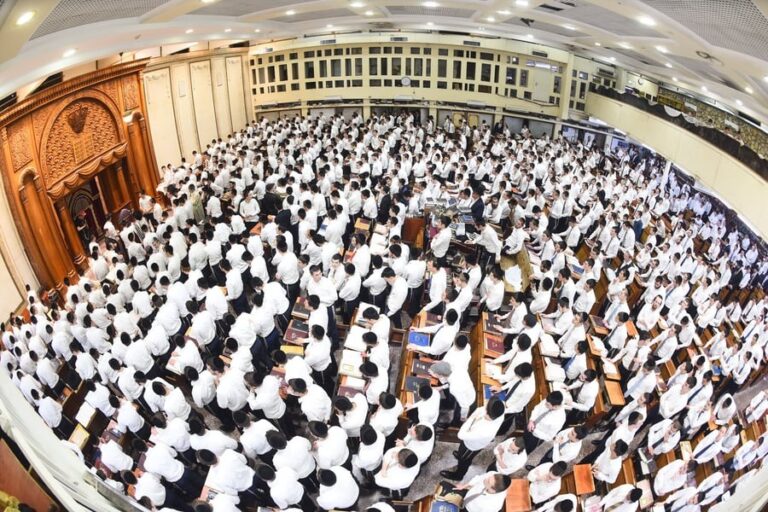
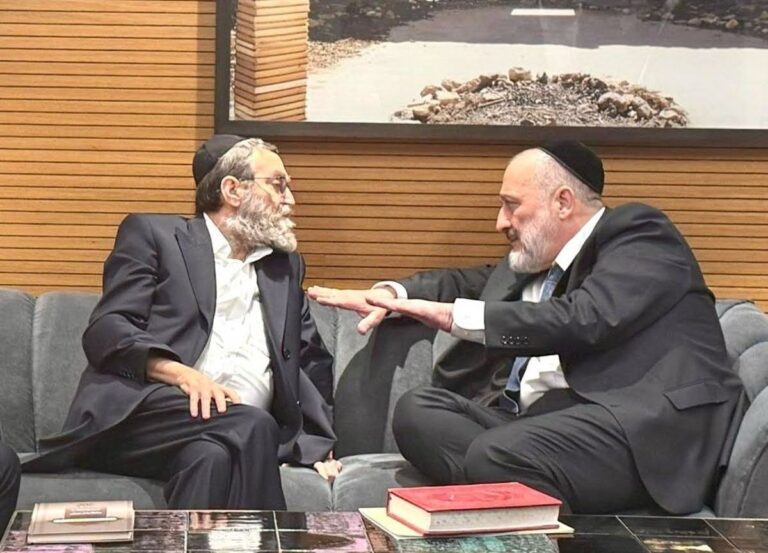


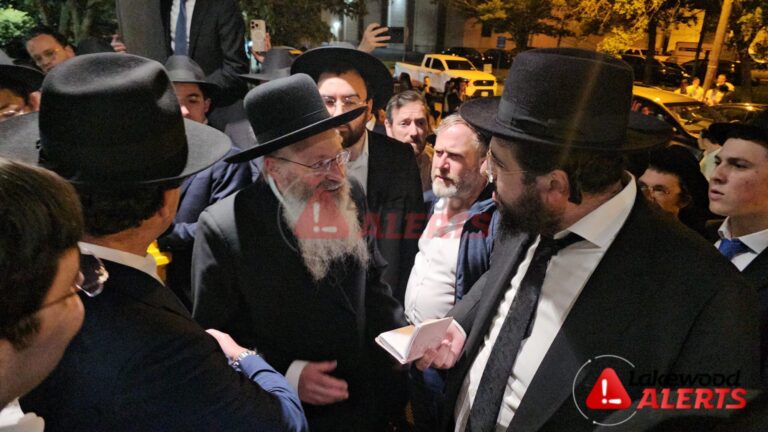


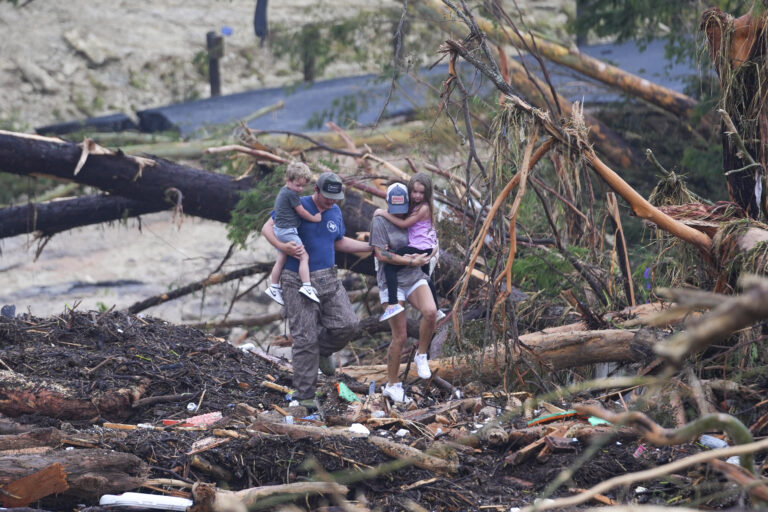
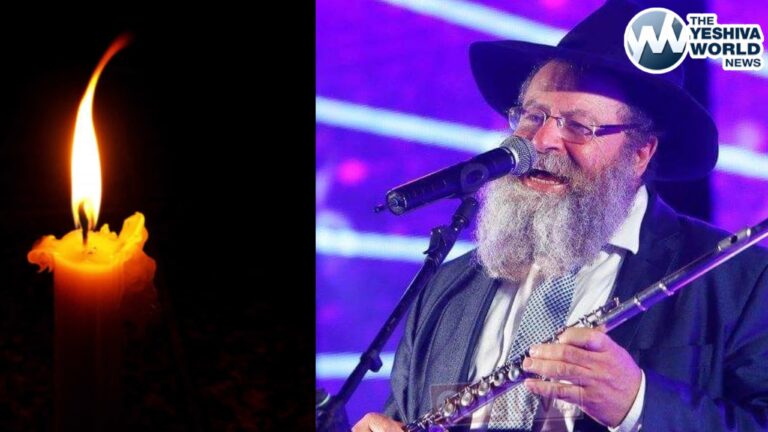
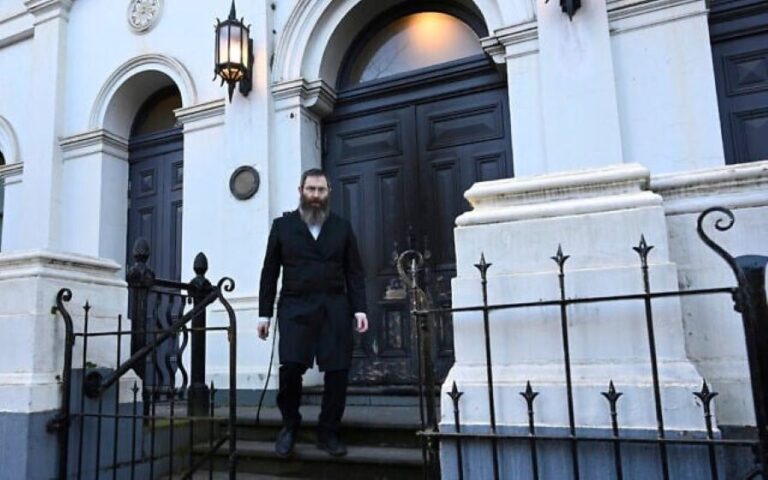
26 Responses
The way the charedim are treated is strikingly similar to the way the jews, as a whole, are treated.
For centuries, we were told “go back to Palestine”, and now that are we are here, they don’t want it. So what do they want?
They want the jews to disappear!
The secular don’t respect charedi culture in the military, and then are upset that they don’t enlist. So what do they want?
They want the charedim to disappear!
The author’s perspective fails to acknowledge the profound ideological divide between the Charedi community and the Zionist establishment, which has historically demonstrated hostility toward traditional Torah values. Forcing Charedim into the draft is not about national unity; it is a coercive effort to assimilate them into a secular framework that undermines their spiritual identity.
The Torah world thrives precisely because it remains separate from such influences, dedicating its energies to preserving the soul of the Jewish people. Compelling military service upon those who reject the state’s secular ethos is a violation of their religious conscience and ultimately weakens, rather than strengthens, the moral fabric of the nation. True unity will emerge only when the state respects the Charedi community’s autonomy and their unique contribution to Jewish continuity.
Excellent article.
Agreed 95%.
Wow, great article and great idea.
Vintage Rabbi Hoffman!
And now for Part 3.
Trying to gently, diplomatically push what is ultimately the original zionists’ agenda of subjugation the Torah to their wretched hatred of it, does not fool anyone. They don’t need soldiers. They need to systematically eradicate Torah supremacy by assimilating all those outdated Torah people, whom Ben Gurion sr”y
Referred to as ‘dust on the wheels of history’.
Nice try, but no sale.
Great article BUT, a very important point needs to be raised, the Rav pointed out the Rambam regarding defending your brothers from murderers.
The question is, is the Israeli army under current leadership defending your brothers from harms way, or is it fighting a fight with one and half arm’s tied behind their backs because we are worried what the liberals will say? Is feeding our enemies a way of defending our brothers? Is sending soldiers in booby trap areas so not to endanger the enemy’s families also counted as defending your brothers, or is it putting more Jead in harms way?
The tragic status of the Jewish nation today regarding the Beis Hamikdash;
100% pray for it
50% are secular and have little or no interest in it.
45% are religious but adopted to some extent or another Satmar ideology that it can only be achieved through 100% super natural means.
5% are ready to do whatever is necessary to actually rebuild the Beis Hamikdash any way possible.
The Sefer Hachinuch counts rebuilding the Beis Hamikdash as one of the 613 commandments, he writes the commandment is binding when most of Klal Yisroel lives on their land. Acc. to the official numbers of Jews in the world today we are pretty close if not their already.
At one of the Otzma Yehudi rallies Rabbi Dov Lior encouraged the group not to worry about their popularity as also in Yetzias Mizrayim it says וחמושים עלו בני ישראל ממצרים only a small fraction merited to leave as the others were not worthy…
By Mechiras Yosef and the Meraglim the Majority were wrong and the minority were right…
Avraham Avinu was a Yachid vs many as was Moshe Rabenu, Yosef Hatzadik, Dovid Hamelech, Yirmiyah Hanavi, Yeshaya Hanavi, Mordechai Hatzadik, Matisyahu Kohen Gadol and more…
At the end of the day in the Torah we find being afraid to conquer Eretz Yisroel is the sin of the Meraglim, going to conquer when it is not the time is the sin of the Maapilim. What it all depends on is if Hashem is commanding to do it now or not.
The fact that we have no system of appointing legitimate Rabbis to a Sanhedrin or some sort of supreme Rabbinical court is the main churban of our times. All we have are way to many groups each claiming they and their Rabbis are the truth and all the others and their Rabbis are invalid.
At the end of the day the reason to not join the Israeli army is because the army is ruled by MIsyavnim, decisions are made by secular politicians, lawmakers and judges, a Torah Jew has no right to place his life in the hands of secular decision makers who send soldiers to die en masse instead of carpet bombing from the air. All other reasons and discussions are mere attempts to distract attention from this plain and simple truth. In the army of a genuine Malchus Yisroel Torah Jews will be the first to join like Matisyahu Kohen Gadol and his sons.
Matisyahu Kohen Gadol and his sons would more likely have taken up arms and waged war against the Misyavnim of today and not enlist in their army to fight for them.
Excellent editorial. It is very inspiring to hear this practical out of the box perspective. At least this way we can anticipate a fresh outcome as opposed to doing nothing and complaining then getting the same old divisive results.
It is time for change. The question is do we have the leadership on all sides who are willing to listen, take risks and try something new. I believe our cause, our people, humanity and fulfilling Hashem’s will for peace is well worth it.
It is time to put our dreams into practical action and stop just following the herd.
Extremely interesting article and context.
I appreciate the suggested solution as well
As someone who grew up in the Charedi world and later chose to move to Israel and served as a commander in the IDF (in a non-frum unit, although about 20% of us were religious), I wanted to share my experiences.
1. I have been in major army kitchens and the level of kashrus is generally extremely high. In Charedi/religious units the standard is even higher.
2. I never once experienced or witnessed a religious soldier forced to unnecessarily violate Shabbos. In all my service and from all my many friends who served I heard of one borderline situation (where a commander was commanded on Shabbos to deliver warm food to soldiers who were camped out in the field instead of them relying on rations).
3. Us Davening during cleanup was indeed a source of frustration during basic training for the chiloni soldiers. But most got over this very quickly. The other soldiers were mostly upset when someone claimed to be religious just to go to daven but didn’t actually. Those of us who actually were they never got upset at (as a commander I did my best to have davening not overlap with cleanup and to prevent obviously not davening soldiers from joining to daven). The army can definitely do better in this regard.
4. Women singing at ceremonies is indeed an issue. Charedi/frum units have been able to solve for this. But for others it’s up to the officers decision, which is sometimes understanding, but often not.
This is not a rationale for encouraging Charedim to serve, but the level of learning about Halacha and Frum values that are conveyed to other soldiers who are exposed to us is an immense Kiddush Hashem. For the most part, Chilonim were quite interested in learning about our values and were very very respective of us.
Every person is different, but someone who goes into the army strong, will come out even stronger and have inspired/been mekarev, others along the way.
Very good article but maybe should have mentioned the historical dependency of the the Chassidim and Perushim communities on their brothers in Chutz L’Aretz, through collections and the kollel / chaluka system. Also, it would be a good idea to provide evidence for the claims made against the IDF as far as its lack of adherence to kashrus and other religious matters etc.
This is dumb. Because the equivalent war isn’t the American Revolution, but rather WW2, in which America did forcibly draft Native Americans. One wonders how one can trust R Hoffman’s osak if he has no clue how to create valid analogies
Is Rabbi Hoffman somehow affiliated with YWN?
Lucky for the comments otherwise the article might be taken seriously
The author ignores the deep mistrust between the Charedi community and the Zionist establishment, rooted in a history of hostility toward Torah values. For Charedim, Torah learning is the ultimate service to the Jewish people, preserving their spiritual and national identity. The draft isn’t about equality—it’s an attempt to force assimilation into a secular framework that undermines their way of life. True unity will only come when the state respects the Charedi contribution to Jewish continuity and stops imposing policies that alienate and erode trust.
Once full-scale war broke out after the State of Israel
declared its existence on May 14, 1948 [CE]
Reb Shraga Feivel’s [Mendlowitz] thoughts
were never far from Eretz Yisrael.
A group of students saw him outside the Mesivta building
one day, talking excitedly with Rabbi Gedaliah Schorr
and gesticulating rapidly with the newspaper held in his hand.
“If I were your age,” he told the students,
“I would take a gun and go to Eretz Yisrael.”
SOURCE: Reb Shraga Feivel: the life and times of
Rabbi Shraga Feivel Mendlowitz, the architect of Torah in America
(chapter 26, page 338) by Yonoson Rosenblum for Artscroll / Mesorah,
year 2001, based on Aharon Sorasky’s Shelucha DeRachmana,
ISBNs: 157819797X, 9781578197972, 1578197961, 9781578197965
Rabbi Aryeh Kaplan [ZTL ZYA] said this in his
HANDBOOK OF JEWISH THOUGHT, volume II,
chapter 3, paragraph 24, top of page 23:
“Experience has shown us that when Jews are
not ready to defend and die for their fellows,
an even greater number are killed in the end.”
Rabbi Steven Pruzansky (an Orthodox Rabbi who made aliyah) said:
“The IDF [Israeli Army] soldier fulfills three mitzvot
that cannot be fulfilled by the soldier in any other army:
the settlement (Yishuv) of Eretz Yisrael,
preserving Jewish life (Pikuach Nefesh),
and Kiddush HaShem, the sanctification of G-d’s Name,
implicit in the Jewish people exercising sovereignty over our homeland.”
SOURCE: Ask the Rabbi, Part 22 by Rabbi Steven Pruzansky
2023 August 18 from www (dot) RabbiPruzansky (dot) com
Rabbi Pini Dunner said:
“It is an open secret that out of the 12,000 annual exemptions,
over half do not meet the standards of full-time Torah study,
or even close.”
SOURCE: article titled: “Haredi and Secular Jews Must
All Serve the Israeli Nation and Find Purpose Together”
by Rabbi Pini Dunner 2024/06/28 on algemeiner (dot) com
This quote is from Yehuda Dov for VIN News:
“A Defense Ministry committee which recently surveyed
Charedi youth claimed that a large proportion of them
could be drafted, since 13% are not studying and not working,
39% are working, 19% are working and learning
and only 29% are exclusively studying Torah.”
SOURCE: IDF Gathering Info About Working Charedim
Prior To Sending 3000 Draft Notices
by Yehuda Dov 2024 July 3 from www dot VINNews dot com
Rambam, Hilchot Shabbat, chapter 2, paragraph 23:
[The following rules apply] when gentiles lay siege to Jewish cities:
If their intent was financial gain, then Shabbat laws
should not be violated because of them,
nor are we allowed to wage war against them.
If a city is located near the border, however, we should march against them with weapons and wage war against them, even when they are [merely] demanding hay or straw.
In any location, if the gentiles’ intent was [to harm] Jewish lives,
or if they engaged in battle with a city or laid siege to it,
without stating a specific intention, we must wage war
against them and the Shabbat laws should be violated because of them.
It is a mitzvah for every member of the Jewish people who can come [to their assistance] to go out and help their brothers who are under siege and save them from the gentiles [even on] Shabbat. It is forbidden to delay until after Shabbat.
After they [the Jewish soldiers] saved their brothers,
they [the Jewish soldiers] may return home with
their weapons [even] on Shabbat, so that a
dangerous situation will not be created in the future.
Babylonian Talmud, tractate Sanhedrin, page 72A:
“If you see someone coming to kill you, then arise and kill him first.”
PERSONAL NOTE:
In our time, Hamas and Hezbollah are coming to kill us.
For Jews to arise and kill them first is not merely permitted,
it is required by Torah Law.
In Tanach, Sefer Shoftim, [the Book of Judges] chapter 5,
the Prophetess Deborah [Devorah HaNeviyah],
sings a Divinely-inspired song.
In chapter 5, verses 12 to 16, the Prophetess Deborah
publicly praises those Jews who fought against the enemies of Israel.
Then she publicly REBUKES those Jews who
did NOT join the fight against the enemies of Israel.
The yerushalmis and NK have been saying this for decades.
The zionists caused all the animosity and anti semitism
If it is a milchemess Mitzvah as the author states, then it follows that All yeshivos in America, England in all of chutz la’aretz must close and send their bochurim to this new Battalion….
Many IDF security experts have stated we should negotiate to release all hostages and not go in to Gaza. Whether they are right or wrong- the life and death decisions of this war are done by chilonim who may or may not be leshem shomayim. How on earth is this a milchemess mitzvah as stated by Rambam?
Furthermore, any suggestions against the instructions of our gedolei Yisrael are clearly against Chinuch 495 that states “”the mitzva deOraysa of adhering to everything the greatest Torah sages instruct- is the mighty pillar that the Whole Torah rests upon…and this is obvious to anyone who has any sense.”
And Chiunch states: “…this applies to every generation and even if the gedolim are wrong!”
I have heard no gedolim advocating of closing the yeshivos and sending the bochurim to a new Haredi battalion……
Great article, but the author is missing additional strong arguments.
1. Haredim cannot enlist in an army that their main mission is NOT to defend the Jewish people only (from IDF website) “first and foremost carried out for the sake of defending the State of Israel and its civilians” (civilians! not Jews). Haredim opine that the state of Israel at its core is prohibited.
2. This is not the first time that Jews are in danger of their enemies, there is no precedent in history since churban Bihm”k that our Torah Giants encouraged establishing a militia etc. to attack our enemies in their hometowns. There is precedent of neighborhood Shomrim etc. but not more.
THE RAMBAM HAS BEEN MISREPRESENTED… THE RAMBAM IN CLEARLY DISUSSING WHEN THERE IS A MELECH, WE HAVE NO KING TODAY, THEREFORE THIS IS NOT A MILCHEMES MITZVAH. ayim shom rambam perek 5